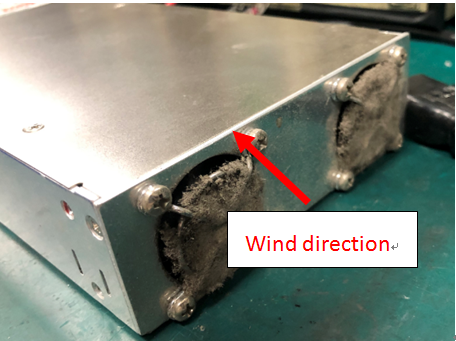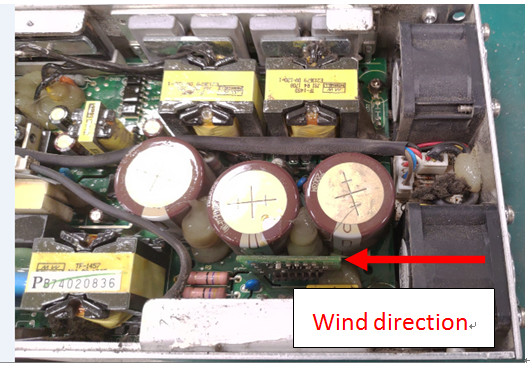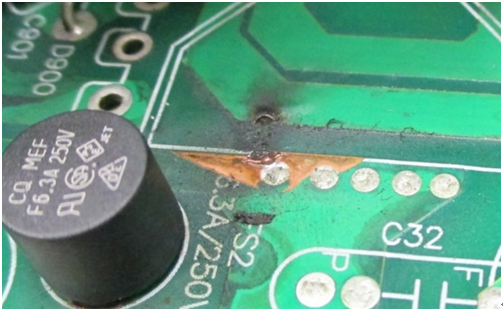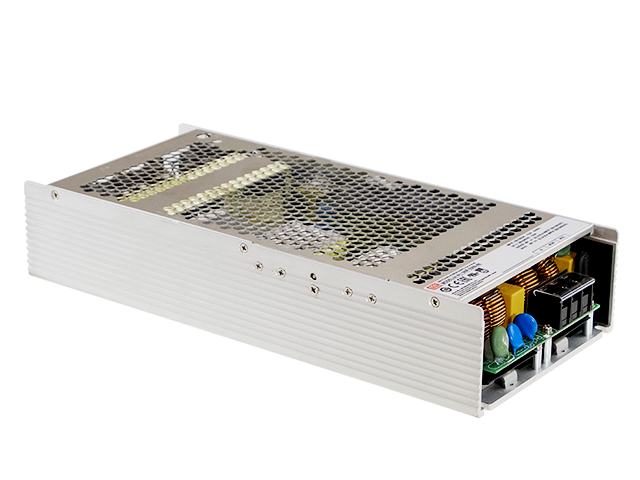Something You Should Know about Cooling FAN
By: Peter Cheng /RMA
peter@meanwell.com
Dedicated to power supply after-sales service for more than a decade, I feel honored to witness the power supply industry’s evolution in both the circuit design technology and the compact parts size. Under this trend, the power density of the power supply has been continuously improved, and so is the product volume.
To achieve the high power density for high-wattage power supplies, the heat dissipation issue is non-negligible. The easiest solution is to implement a fan to enhance heat dissipation. To enhance the efficiency of the fan, the wind direction of the fan is changed from suck-out to blow-in, a change that both the temperature of the components and the internal space volume of the product can be greatly reduced. However, because of the unsynchronized customer’s habits, such design change relatively brings other issues.
Common problems for FAN with blow-in direction:

Figure 1. Dust accumulated on iron net

Figure 2. Dust accumulated at windward side

Figure 3. Arcing caused by dust and moisture
Dust floating in the air is sucked by the fan and attached to the iron net. Accumulating over time, the amount of dust jams the iron net, a fact that causes insufficient air intake and lead to a serious downgrade effect on heat dissipation. Moreover, the jam situation can trigger the “FAN LOCK” function, shutting down the machine.
Figure 2
Dust accumulated between components at the windward side caused insufficient heat dissipation. If moisture is absorbed at the same time, it is possible to cause a decrease of withstand voltage, arcing or short-circuit between components can be expected.
Figure 3
The original design of the distance between the two high-voltage copper foils fulfills safety requirement, but it no long the same if dust accumulated over the time. When those dusts absorb moisture, which will cause the resistance dropped, and finally causing arcing.
Comparison between two different wind direction :
| Wind direction | Advantage | Disadvantage | Application |
| Blow-in |
|
|
Engine room |
| Suck-out |
|
|
Open field Cabinet Factory |
Changing customer's habits regarding the existing design of the blow-in structure of the product is not easy. How to strike a balance between the two? It has become a major task for designers.
MEAN WELL developed a new generation of fanless, conduction cooling power supply, UHP series, the best choice for customers. The unique fanless design perfectly solves the customer’s headaches regarding fan failures caused by absorbing dusts, and it can reduce the frequency and cost of device maintenance. Fanless design can also solve fan noise level issues, thus making the UHP-2500 extremely suitable for the environment that requires absolute quietness.

Fanless UHP series covers 200~2500W
Product features:
| Structure | Advantage | Application |
| Fanless Convention cooling |
• Wide application usage • Low cost • No extra power consumption • Noise and vibration-free • Low maintenance fee • Easy installation |
• Low power density application. • Application requires noise and vibration-free such as medical device, indoor lighting, security system, and precision instrument |
For further fanless design information, please refer to :
https://www.meanwell.com/newsInfo.aspx?c=5&i=707
